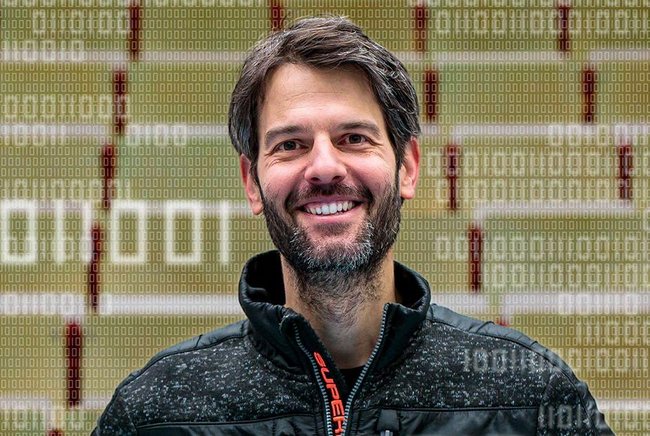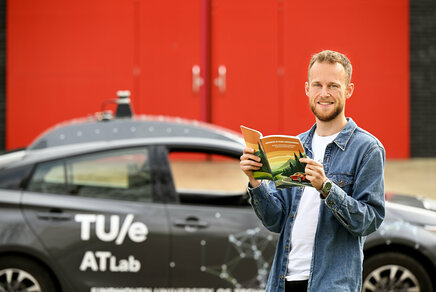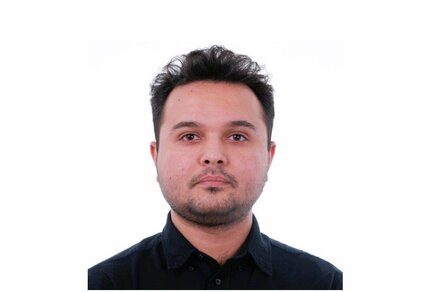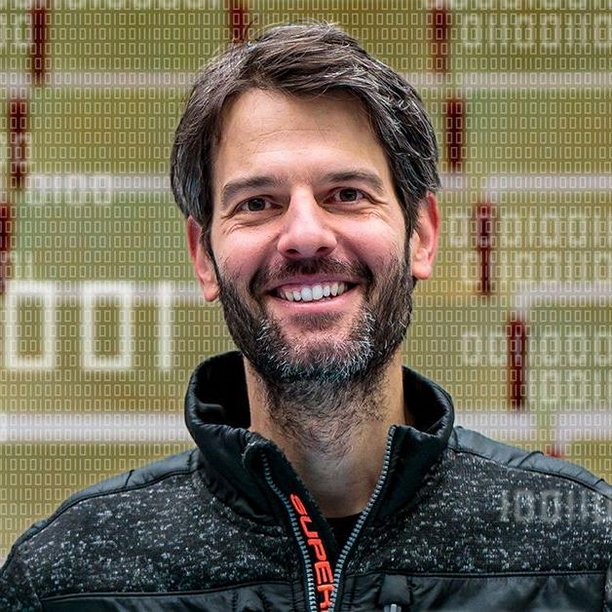Developing an artificial mathematical teacher
Jim Portegies uses mathematics to uncover the immensely powerful and simple learning algorithm in the human brain.

Jim Portegies is an associate professor in the Applied Analysis group at the department of Mathematics and Computer Science, where he is part of the Centre for Analysis, Scientific computing and Applications (CASA). He is also involved in the work of EAISI, TU/e's institute on artificial intelligence. AI plays an important role in his research. A brief introduction in five questions and answers.
What is your key research question? And what role does AI play in solving this question?
I’m studying the mathematics of human learning. I’m working with the hypothesis that human learning is driven by very mathematical processes, with a central role for simplification and abstraction. I’m using mathematical tools to expose, describe and analyze these processes. We then try to replicate them in practical algorithms, in the hope that one day we can upload them to a robot, so that the robot will then start to learn just like a little child. Another project that highlights the type of problems we are trying to solve is the development of an artificial mathematical teacher (within our educational software Waterproof), that helps our students in learning the skill of writing mathematical proofs.
What are the key challenges in your work?
The mathematics that is currently developed seems insufficient for understanding machine or human learning. Neural networks and deep learning reach amazing performance in image recognition or in playing Go or Chess, but we really don’t seem to understand why. It is probably even more difficult to build understanding of human learning. We’re really in need of entirely new fields of mathematics.
What are the practical applications of your research? How does it benefit society?
With the way we try to obtain insight in how human learning works, and by building human-like artificial intelligence, we also need to enable communication between humans and AI. An example is the artificial mathematics teacher: it is just not enough when it solves an exercise or gives a mathematical proof, it also needs to be able to explain it to a student. Solutions to such problems will help make machine-learning more interpretable and fair, which is key to an ethical implementation of AI in society.
With the artificial mathematics teacher, we hope to eventually contribute to better mathematics education. Moreover, as this project gives us insight in how humans learn, we also think it may benefit education in general.
Finally, we hope that our tools will make it easier to check that certain pieces of mathematical theory are correct. This will of course primarily benefit other mathematicians, but as their work is used in practical applications as well, verification of their work will benefit society, too.
How do you see the development of AI in the future? What do you think are the main risks and benefits of using AI for society?
Progress may be slow, but I expect that AI will eventually give us insight in how the human brain works. It is pure speculation at this point, but I do think that decades from now it will be possible to identify relatively precisely what a concept like consciousness is, just because we will be able to identify or replicate it in artificial algorithms. This may have a very de-stabilizing effect on society, and therefore I think it is important to continously keep track of the ethical implications of the newest developments.
Why should any AI researcher want to work at TU/e?
The TU/e provides a very interdisciplinary environment for AI research. It is easy to make connections with other researchers and see how algorithms make it to engineering practice. Moreover, since many different fields are currently facing the same problems, we can also learn from each other as we are trying to find solutions. The TU/e is also a fantastic environment to combine very solid engineering knowledge with state-of-the-art machine-learning techniques, using the best of both worlds.
Media contact
More on AI

![[Translate to English:]](https://assets.w3.tue.nl/w/fileadmin/_processed_/e/1/csm_Beintema_Gerben_EE_PO_VH_4007%20%281%29_a6974ea62b.jpg)

Latest news


![[Translate to English:] Photo: Bart van Overbeeke](https://assets.w3.tue.nl/w/fileadmin/_processed_/e/0/csm_BvOF%202019_1031_BHF%20license%20TUe%20ILI%20copy_8a50884392.jpg)
